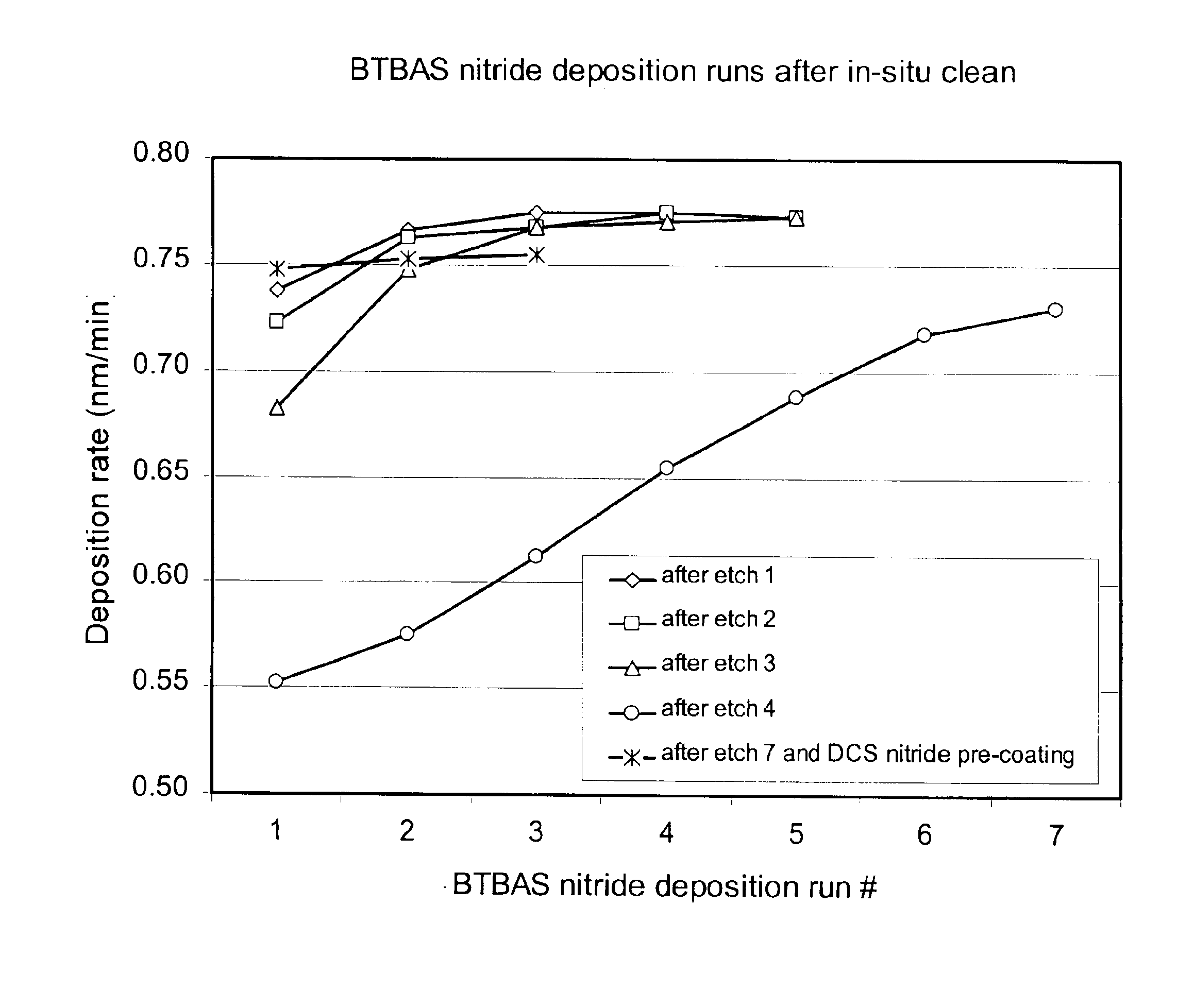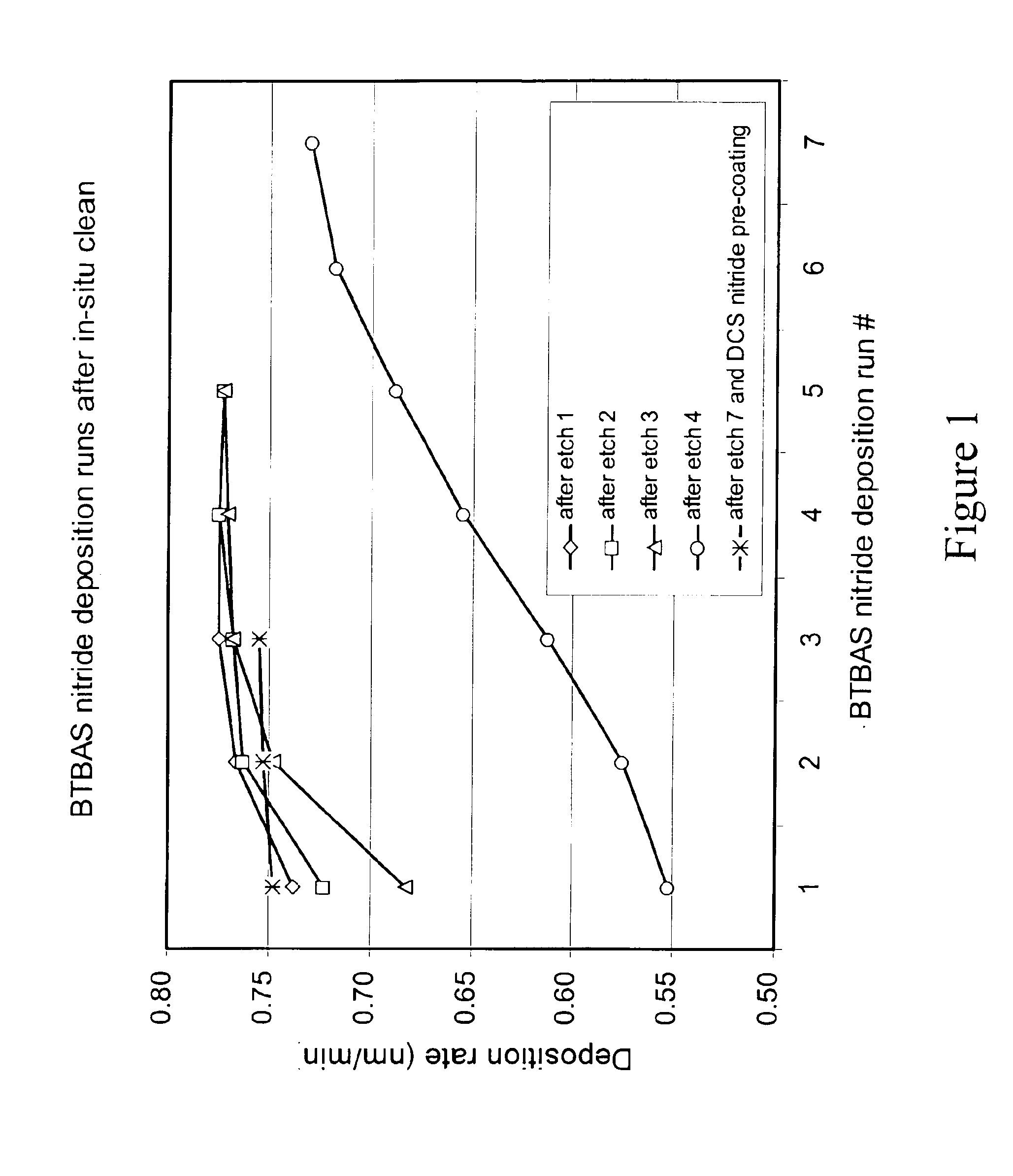Reactor precoating for reduced stress and uniform CVD
a precoating and reactor technology, applied in the field of semiconductor processing, can solve the problems of unacceptably high particle levels in the process tube, large disadvantages of the btbas process, and only economical manufacturing processes, and achieve the effect of increasing and maintaining the deposition ra
- Summary
- Abstract
- Description
- Claims
- Application Information
AI Technical Summary
Benefits of technology
Problems solved by technology
Method used
Image
Examples
Embodiment Construction
[0009]In one embodiment, a method is provided for deposition of silicon nitride films workpieces or substrates in a plurality of runs using an organic silicon source, and particularly bis-tertiary-butyl amino silane (BTBAS). This embodiment will be described in further detail with reference to FIG. 1. FIG. 1 shows the deposition rate for a series of consecutive BTBAS-based nitride deposition runs. Prior to each series, an in-situ cleaning was performed on the quartz process tube and the quartz wafer boat that accommodates the wafers in a vertically spaced relationship. Quartz rings were disposed directly below each wafer to improve the uniformity of the BTBAS-based deposition over each wafer. At the start of the experiments shown in FIG. 1, the quartzware was new and unused. A first series of four depositions of a thickness of 60 nm to 80 nm each was carried out. During this series the process conditions, in particular the temperatures of five heating zones in a vertical batch proce...
PUM
| Property | Measurement | Unit |
|---|---|---|
| temperature | aaaaa | aaaaa |
| temperature | aaaaa | aaaaa |
| thickness | aaaaa | aaaaa |
Abstract
Description
Claims
Application Information
 Login to View More
Login to View More - R&D
- Intellectual Property
- Life Sciences
- Materials
- Tech Scout
- Unparalleled Data Quality
- Higher Quality Content
- 60% Fewer Hallucinations
Browse by: Latest US Patents, China's latest patents, Technical Efficacy Thesaurus, Application Domain, Technology Topic, Popular Technical Reports.
© 2025 PatSnap. All rights reserved.Legal|Privacy policy|Modern Slavery Act Transparency Statement|Sitemap|About US| Contact US: help@patsnap.com


